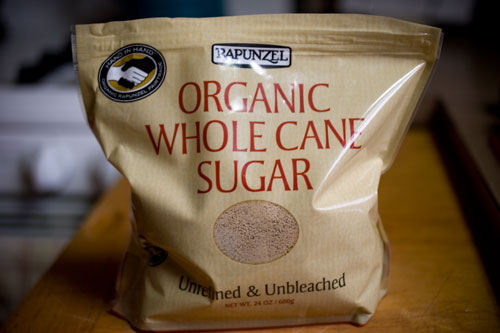
Start This Recipe about 2 days before you want to eat it
Dinner Table Rating
1 thumb per family member
Cook’s Rating ![]()
![]()
![]()
Accessibility of ingredients, ease of preparation, and affordability
I picked this recipe because I wanted to serve it with next week’s recipe, Carrot Curry. I’m pretty keen on fruit chutneys and have canned several versions. But I’ve never tried a fermented chutney, and so was pretty excited about this recipe. The jury’s still out on the Dinner Table Rating. Since it’s a condiment, I didn’t feel it would be fair to judge it by tasting it straight out of the jar. I mean, mayonnaise right out of the jar is pretty gross, but I can’t imagine having a turkey sandwich without it. Right? So out of fairness to the chutney, you’ll just have to check back next week to find out if it’s any good. Although, if the smell from the jar is any indication of things to come, I think we’re in for a real treat.
** I’ve updated the Dinner Table Rating to reflect the family’s votes. Everyone but the Pickle loved this chutney. Big thumbs up!
I like the flexibility of fruit here. I chose peaches and mangoes because they’re in season and our grocery store had them on sale. But in the fall, I could see making an apple or pear version that would go really well with some chicken sausages and sauteed greens. Yum!
Fruit Chutney (Nourishing Traditions, page 106)
- 3 cups fresh organic peaches (or pears, apples, mango or papaya)
- 1⁄2 cup water
- grated rind of 2 organic lemons
- juice of two organic lemons
- 1⁄8 cup rapadura
- 2 tsp sea salt
- 1⁄4 cup whey (page 87, Nourishing Traditions)
- 1⁄2 cup crispy pecans (page 513, Nourishing Traditions) chopped
- 1⁄2 cup dark raisins
- 1 tsp ground cumin
- 1⁄2 tsp red pepper flakes
- 1⁄2 tsp dried green peppercorns crushed
- 1⁄2 tsp dried thyme
- 1 tsp fennel seeds
- 1 tsp coriander seeds
1. Mix water, lemon juice, lemon rind, Rapadura, salt and whey.

I have a sensitivity to sugar and so does at least one of our kiddos. So I make it a point to be familiar with alternative sweeteners. However, I had never been introduced to Rapadura. I had no idea what it was. Sally notes that Rapadura is the commercial name for dehydrated cane sugar juice, which the people of India have used for thousands of years. The process of producing Rapadura uses a “low and slow” heating method that doesn’t separate the sugar crystals from the molasses, which results in a sugar that retains a majority of its natural minerals and vitamins. Didn’t know that sugar had vitamin and minerals? Me neither! This chart is a very interesting comparison of the nutritional information of different sugars. And while it is a better choice than white sugar, it is still sugar. So don’t go licking your fingers and sticking them into the bag (I so used to do this as a kid! Please tell me I’m not the only one.) I really like this thorough, but readable, description of Rapadura sugar vs. other sugars.
There were some legal issues surrounding the use of the word “Rapadura” in marketing sugar, so the brand that I bought, Rapunzel, doesn’t actually have the word Rapadura anywhere on the package. But from everything I could find online, this brand is, in fact, the real deal. It has a nice, caramel flavor. I’m looking forward to baking with it to see how it works in other recipes.
2. Peel fruit and cut up into lemon juice mixture. Mix with nuts, raisins, herbs and spices.

I like to buy my spices in bulk at our local natural food store. They cost a third as much as buying pre-bottled spices. If I didn’t buy them there, I’d head to an Indian grocer, where obscure Indian spices are always inexpensive. And if I just couldn’t stand to buy an obscure spice that I don’t plan on using again anytime soon, I guess I’d leave it out. But then I’d probably think the chutney was “missing something” when it came time to enjoy it at the table. Don’t say I didn’t warn you.
3. Place chutney in a quart-sized, wide-mouth mason jar. Press down lightly, adding more water if necessary to cover the fruit. The mixture should be at least 1 inch below the top of the jar. Cover tightly and keep at room temperature for two days before transferring to the fridge.

This step was my favorite because it gave me an excuse to use my recently-inherited, antique glass funnel. Isn’t that thing wonderful? It makes me inordinately happy just to see it in my kitchen. My great-aunt would be mighty pleased to know that I’m putting it to such good use.
Come back next week to find out how the chutney rates with the kiddos at the dinner table.
